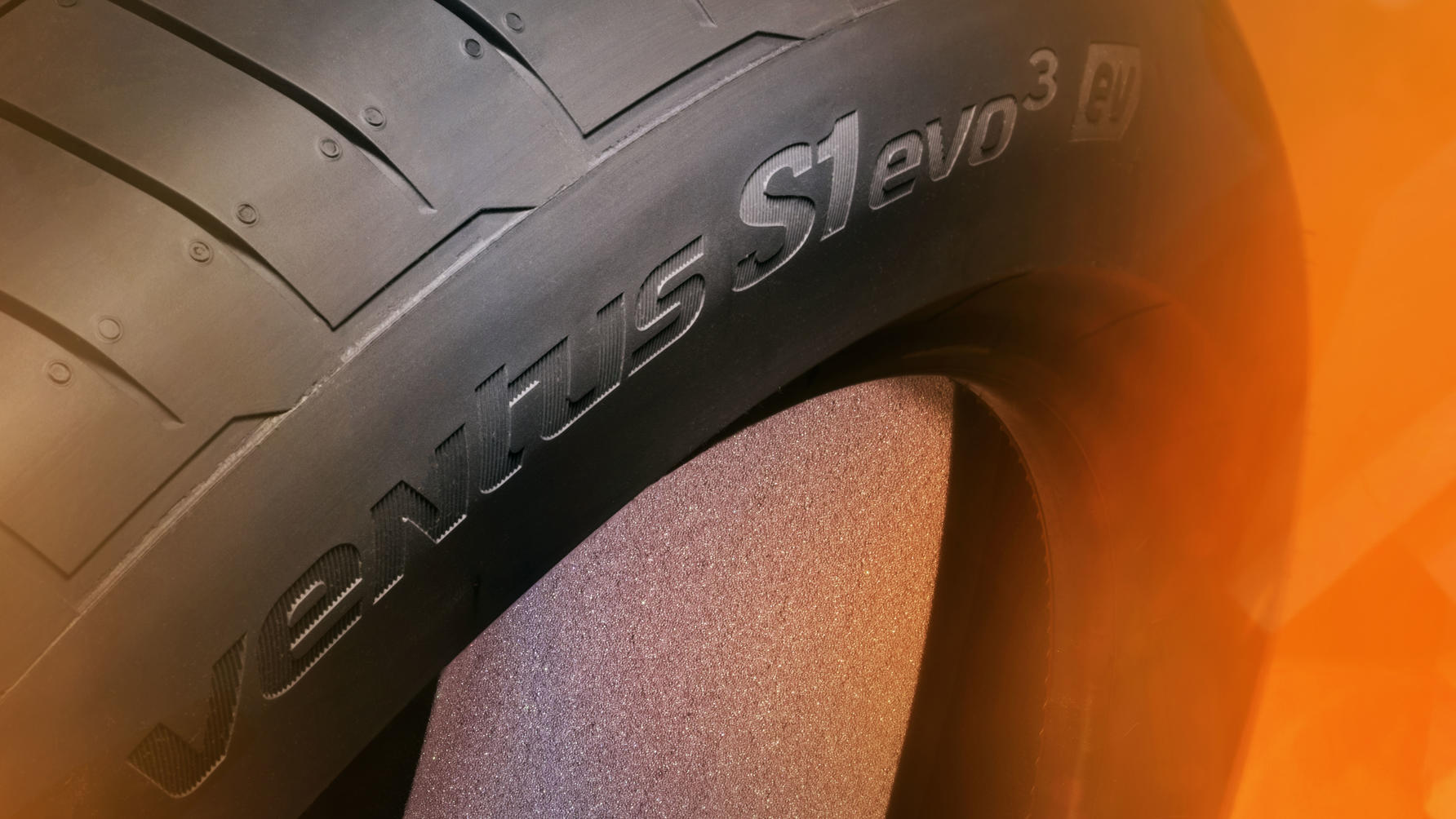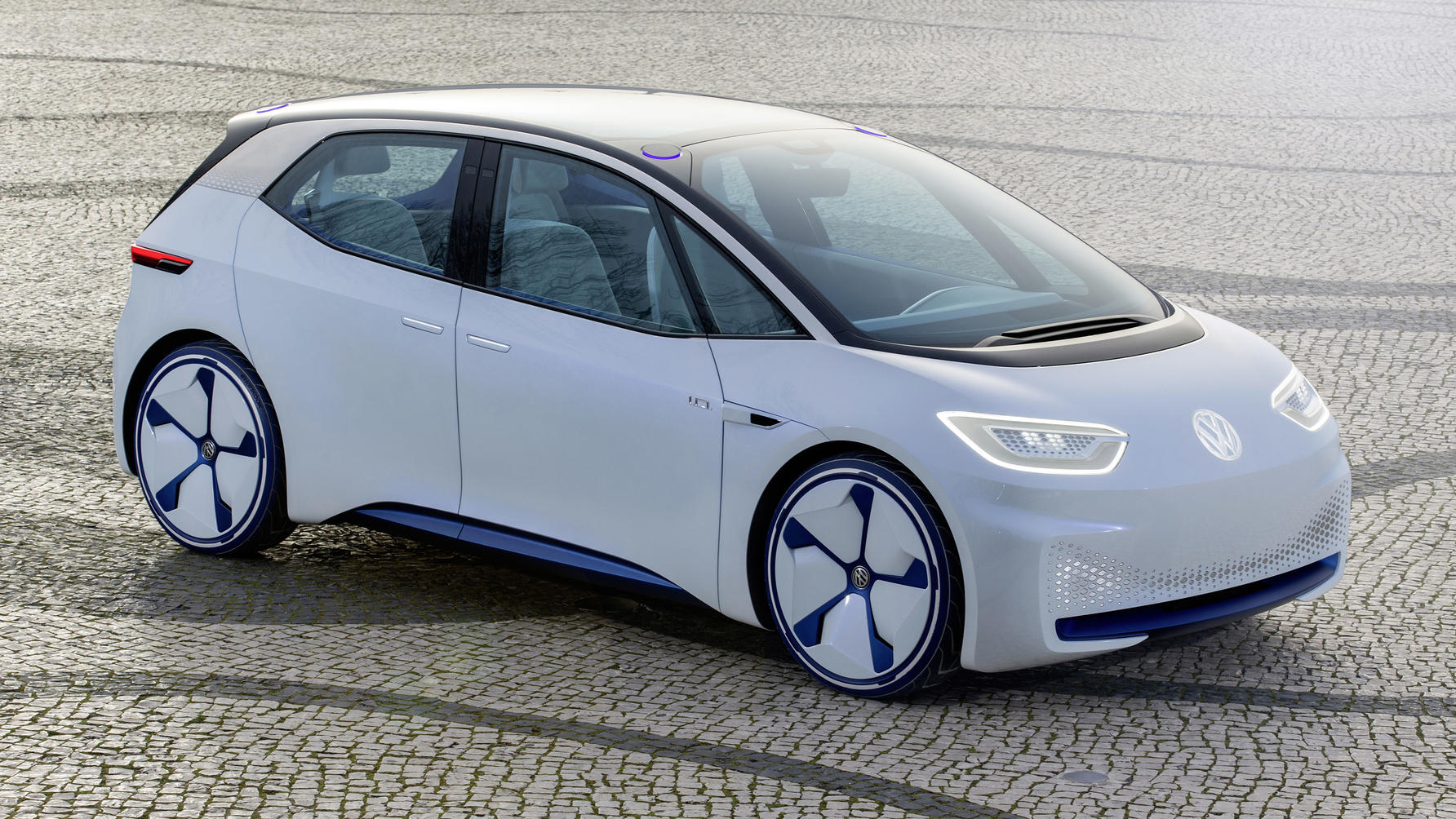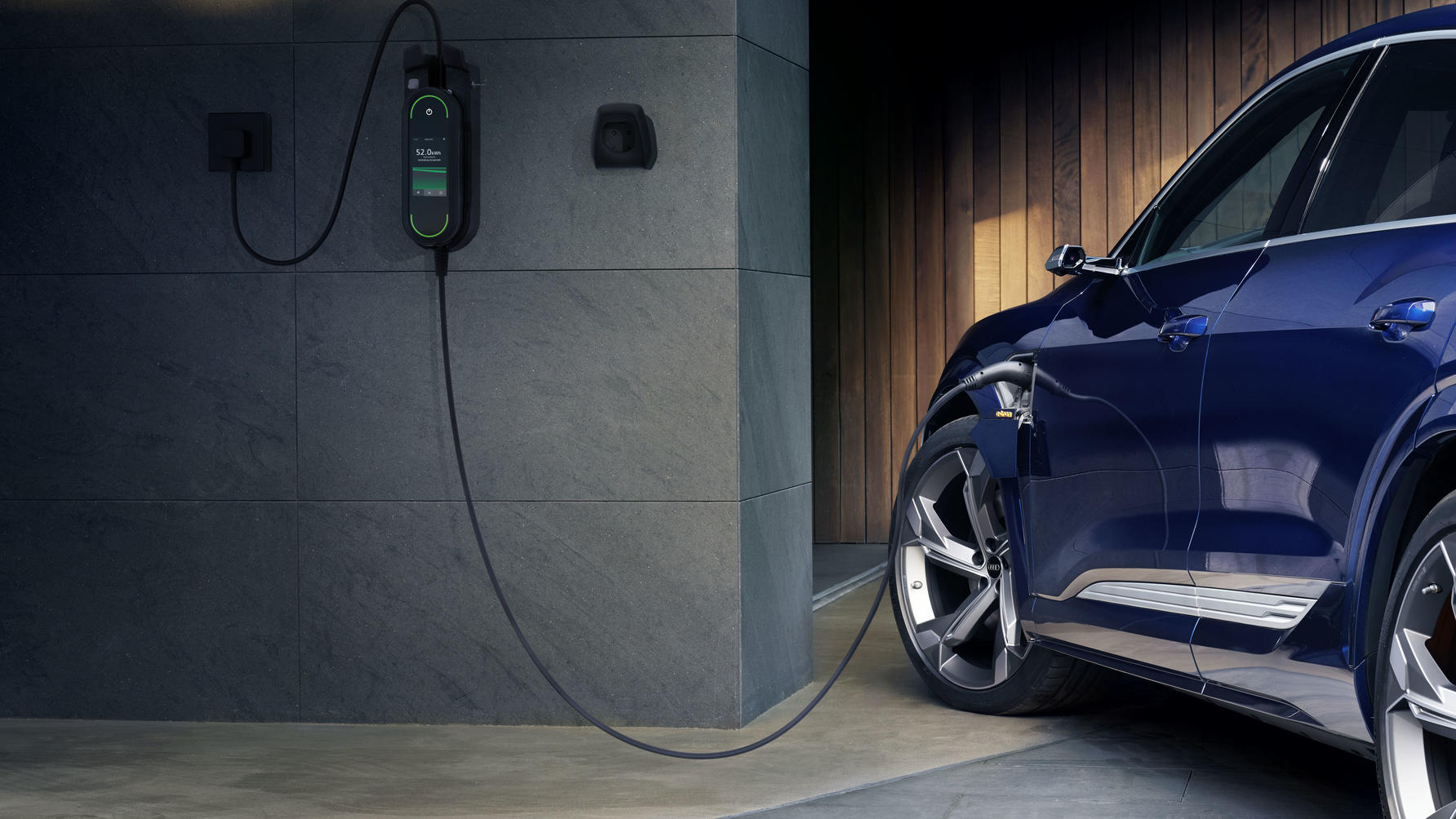
Everything you need to know about EV tyres – from A to Z
EV-only tyres are being developed to meet the unique needs of electric driving – and Hankook is leading the way. Read on for the full lowdown…
There’s plenty of high-voltage hype around EVs, with lots of questions about batteries, motors, charging points and in-car tech. But what about tyres? The truth is, they’re changing too, as manufacturers like Hankook develop special, EV-only tyres to maximise mileage while handling all the power and torque that comes with the all-electric driving experience.
EV tyres have a tricky brief. They must be strong yet lightweight, efficient yet affordable and, of course, long-lasting. Not to mention quiet and comfortable.
Hankook is at the forefront of EV tyre tech. Hankook’s new, dedicated EV tyres feature special compounds, pioneering construction methods and unique tread patterns, all with battery-powered motoring in mind. You’ll find Hankook’s tyres fitted as standard on flagship production EVs – as well as some future concepts – from manufacturers including Audi, Porsche and Volkswagen.
So what makes a good EV tyre? And what do you need to know? Find out with this A to Z guide...
A is for
AERODYNAMICS
Just like the rest of the car, a tyre must glide through the air as cleanly as possible, to minimise drag and – in the case of EVs – help the car go further on a single charge. But a tyre is constantly moving and shape shifting, adding to the aero challenge. To combat this Hankook’s engineers have developed specially shaped sidewalls and tread patterns to optimise airflow.
B is for
BEAD-PACKING TECHNOLOGY
Hankook’s dedicated EV tyres are reinforced in places with a special nylon material. This ‘bead-packing’ technology replaces a conventional, yet heavier, protection bar, boosting strength and protecting the tyre from accidental knocks.
C is for
CONSTRUCTION
Bead-packing is just one example of Hankook’s clever construction techniques. EV tyres must be stronger than regular tyres (electric cars tend be heavier than combustion cars), but also weigh as little as possible. Hankook’s e-tyres are therefore developed using lightweight yet highly durable materials, such as a double-layer carcass made from high-performance fibre including new polymers, silica and silane.
D is for
DURABILITY
With high battery weight and plenty of power, EVs place big demands on their tyres. But thanks to new tread technology and special compounds, the Hankook Ventus S1 evo 3 ev achieves up to 30% greater durability compared to a regular tyre, with a 5% increase in abrasion resistance – this helps them wear less and last longer.

E is for
EFFICIENCY
With any EV, driving range and battery life is crucial. That’s why Hankook EV’s tyres are designed to complement electric cars, helping them drive as far as possible between top-ups with specially developed aero, compounds, and other high-tech tricks.
F is for
FORMULA E
From the 2022/23 season onwards, Hankook will provide tyres for all teams in the FIA Formula E championship – creating bespoke compounds designed for the upcoming ‘Gen3’ cars. With options for both wet and dry conditions, and with Formula E’s environmental agenda in mind, the tyres will contain bio-sourced material and sustainable rubber. Hankook is no stranger to motorsport, having been the exclusive tyre supplier to many renowned racing series around the world, including the all-female, single-seater W Series since 2019.
G is for
GRIP
From full-throttle starts to warp-speed cornering, EVs need plenty of grip to convert the high torque into movement – just like any other high-performance cars. With e-tyres, however, the challenge lies in combining high grip with low rolling resistance, while also minimising wear and maximising comfort, in all weathers, all year round.
H is for
HANDLING
Tyres are an essential part of any high-performance car – often engineered specifically for the chassis and suspension. EVs are no different. In fact, with immediate acceleration and a low centre of gravity, many EVs are high-performance heroes, requiring high-tech tyres. Hankook’s EV tyres offer impressive lateral stiffness for precise handling even at high speeds.
I is for
ID.3
In 2020, an all-electric Volkswagen ID.3, fitted with Hankook tyres, set a new world record for the longest continuous journey in an electric vehicle through a single country. The car drove for 65 days and more than 28,000km across Germany, using 652 fast-charging stations along the way.

Image: Volkswagen
J is for
JUGGLING ACT
A dedicated EV tyre has all sorts of jobs to juggle – often with completely conflicting demands. They must be quiet yet hard-wearing, light yet strong, comfortable yet grippy. And most of all, efficient and affordable. On top of that, they should perform come rain or shine, on all sorts of roads and on all sorts of cars.
K is for
KINETICS
Tyres are all about physical forces and motion, but the science starts long before they’re fitted to a car. For its latest EV tyres, Hankook’s engineers developed a new vulcanisation process, creating an all-new compound using a magic combination of temperature, time, and pressure.
L is for
LABELS
Every new tyre features a label describing its vital stats and efficiency rating, and this includes EV-only tyres. As well as the tyre’s size and speed rating, the label tells you about a tyre’s fuel economy, wet grip and noise level, indicated as a decibel reading.
M is for
MANUFACTURING
Formed in South Korea in 1941, Hankook manufactures innovative, award-winning tyres for cars, light trucks, SUVs, HGVs, buses and motorsport. It has five R&D centres and eight production facilities around the world, including a state-of-the-art manufacturing site in Hungary with around 3,000 employees producing up to 19 million tyres a year.
N is for
NOISE REDUCTION
With quiet e-motors and no combustion engine, electric vehicles generate very little noise, so the sound of the tyres on the tarmac becomes more obvious. That’s why Hankook’s EV tyres feature a special tread pattern designed to reduce road noise. The result is a rating several decibels lower on average than a conventional tyre, helping to maximise comfort.
O is for
ORIGINAL EQUIPMENT
A number of big name car makers are already equipping their electric and hybrid models with specially-developed Hankook EV tyres as standard, putting Hankook at the forefront of forward-thinking motoring. One of the latest is the all-new ID.4, Volkswagen’s first all-electric SUV.
P is for
PORSCHE
Hankook has also partnered with Porsche, providing dedicated EV tyres for the all-electric Taycan sports saloon. “Providing the original equipment for sporty, premium vehicles is already a tradition at Hankook,” says Sanghoon Lee, President of Hankook Tire Europe. “Our engineers have shown that with our products we are well prepared for the new demands in the field of electric sports cars”.
Q is for
QUATTRO
As well as VW and Porsche, Hankook also provides EV tyres for Audi’s range of EVs, including the new e-tron GT quattro. With four-wheel-drive from two e-motors, the e-tron GT (and 637hp GT RS) demonstrates the extra demands placed on EV tyres by high-performance models – and the importance of having tyres capable of handling that power for maximum grip.

Image: Audi
R is for
ROLLING RESISTANCE
The key to maximising EV range is reducing rolling resistance – the energy lost as a tyre rolls over a road. This energy loss must be overcome by the vehicle’s engine or motor, using up fuel or battery power. So, the less energy you lose, the further you can go. With the Ventus S1 evo 3 ev, Hankook has improved rolling resistance by 13% overall.
S is for
SEALGUARD®
Many of Hankook’s EV tyres feature exclusive Sealguard® technology, including those for the Volkswagen ID.4. Punctures up to 5mm in diameter are automatically sealed inside the tyre, so there’s no need to carry a spare wheel and you can continue your journey without any problems.
T is for
TREAD
Hankook’s EV tyres feature an innovative tread pattern, which not only effectively clears water, but also dissipates soundwaves that cause vibrations. These vibrations spread through the car and contribute to road noise. Hankook’s tread pattern reduces this significantly (by several decibels versus a conventional tyre) while increasing smoothness and comfort.
U is for
ULTRA-HIGH PERFORMANCE
Electric motors produce lots of torque, and they produce it instantly. So even the most mundane, everyday EV is capable of demanding a lot from its tyres from the moment it sets off. Many upmarket EVs also have four-wheel-drive and sky-high horsepower, and corner harder than combustion cars. Hankook’s EV tyres are designed to handle all of this while still lasting as long as conventional tyres.
V is for
VENTUS
The Ventus S1 evo3 EV, as fitted to the Porsche Taycan, is Hankook’s flagship electric vehicle tyre. It wraps all of this pioneering technology into one package, maximising battery range, ride comfort, grip and high-speed handling.

W is for
WEIGHT
With large-capacity batteries, electric cars often weigh more than their combustion-engine counterparts. A special EV tyre has to bear this load, while keeping its own weight to a minimum – plus provide the strength and economy-boosting properties required by battery-powered motoring – all at the same time.
X is for
X-RAY
From the outside, a dedicated EV tyre looks quite similar to a regular tyre. But imagine if you could see through the sidewall with X-ray specs. Suddenly, it would look quite different, revealing those bead-packing reinforcements, a double-layer carcass and cutting-edge construction techniques.
Y is for
YEAR-ROUND
As with a regular tyre, electric car tyres must perform all year round, in all conditions and temperatures. Hankook’s unique tread patterns provide grip whatever the weather.
Z is for
ZERO EMISSIONS
Electric cars produce zero emissions at the tailpipe. Hankook’s EV tyres enhance those eco credentials with environmentally friendly materials and production techniques – for example, they are made with a lower proportion of fossil-fuel based plasticisers than conventional, combustion-car tyres.
Ready to discover more about Hankook’s EV tyres? Find out more
Featured

Trending this week
- Car Review
BMW 1 Series





